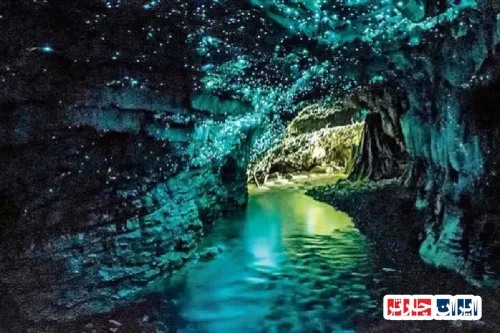Discover the Rich Heritage of Kotor Old Town in Montenegro
Exploring Kotor Old Town Kotor Montenegro offers a unique journey into a historic city renowned for its stunning architecture, ancient walls, and vibrant culture. This charming coastal town, nestled along the Adriatic Sea, boasts a history dating back centuries, where each corner reveals stories of medieval civilizations, Venetian influence, and maritime prowess. Walking through its narrow, winding streets, visitors can immerse themselves in a timeless atmosphere, surrounded by well-preserved fortifications, picturesque squares, and centuries-old churches. The city’s strategic importance in regional trade and defense has left behind a legacy that continues to attract travelers from around the world. Whether exploring the impressive city walls or enjoying panoramic views from the fortress, experiencing Kotor Old Town Kotor Montenegro promises an unforgettable adventure filled with history, culture, and breathtaking scenery. For those seeking authentic cultural immersion, this destination is a must-visit for its rich past and vibrant present.
Discover the Rich History of Kotor Old Town in Montenegro
Kotor Old Town, located in the heart of Montenegro, is a captivating historic city that dates back to ancient times. Its origins trace to the Roman period, with layers of history revealing a blend of civilizations that have shaped its unique character. The city’s strategic position along the Adriatic coast made it a vital hub for trade and cultural exchange throughout centuries. Visitors can explore well-preserved medieval walls, ancient fortresses, and historic landmarks that tell stories of its glorious past. The old town’s narrow winding streets are lined with charming stone buildings, reflecting a mix of Gothic, Renaissance, and Baroque architectural styles. This rich historical tapestry makes Kotor Old Town a must-visit destination for history enthusiasts and travelers seeking authentic cultural experiences. The city’s historical significance is recognized globally, earning it a place on UNESCO’s World Heritage List, highlighting its importance as a cultural treasure of Montenegro.
Architectural Marvels and Unique Design Elements of Kotor Old Town
The architecture of Kotor Old Town exemplifies a harmonious blend of styles accumulated over centuries. Its stone facades, fortified walls, and ancient gates showcase medieval engineering prowess. The city’s narrow streets and hidden courtyards create an enchanting atmosphere, inviting visitors to wander through time. Key structures such as the Cathedral of Saint Tryphon and the Clock Tower display intricate craftsmanship and religious artistry. The city’s fortifications, including the impressive Kotor Fortress, offer panoramic views of the bay and serve as a testament to its defensive ingenuity. Architectural details like arched windows, ornate balconies, and decorative stone carvings reflect the influence of Venetian, Ottoman, and local artisans. These design elements not only serve aesthetic purposes but also narrate the city’s layered history. Exploring these architectural marvels provides insight into the cultural exchanges that have shaped Kotor’s identity as a historic maritime city.
Top Attractions Inside Kotor’s Historic Walls
Kotor Old Town is home to numerous iconic landmarks that captivate visitors. The Cathedral of Saint Tryphon, built in the 12th century, stands as a symbol of religious and architectural heritage. The Maritime Museum offers a glimpse into Kotor’s seafaring history, showcasing ancient maps, ship models, and maritime artifacts. The Old Fortress, perched atop a hill, provides breathtaking views of the bay and city below, perfect for photography and sightseeing. The picturesque Square of Arms and the Church of Our Lady of Health are vibrant gathering spots filled with history and local life. Wandering through the labyrinth of alleys reveals hidden gems like quaint cafes, artisan shops, and historic homes. Each site within the city walls narrates a story of resilience, trade, and cultural fusion, making Kotor Old Town a living museum of Montenegro’s maritime legacy.
How to Experience the Charm of Kotor’s Narrow Streets and Hidden Corners
To truly appreciate Kotor Old Town, immerse yourself in its labyrinthine streets and discover its secret corners. Walking aimlessly through the narrow alleys allows you to stumble upon charming courtyards, local artisan shops, and cozy cafes. Pay attention to the intricate stonework and historical plaques that adorn many buildings, revealing stories from centuries past. Don’t hesitate to explore beyond main routes; many hidden pathways lead to panoramic viewpoints or secluded spots with spectacular views of the bay. Engaging with local residents and shop owners enriches your experience, offering authentic insights into daily life in the old town. Taking time to get lost in these historic streets creates memorable moments and a deeper connection with Kotor’s cultural essence. Remember, some of the most beautiful sights are found off the beaten path, making exploration an essential part of your visit.
The Fortress of Kotor: Secrets from the Ancient Defensive Walls
The Kotor Fortress, also known as San Giovanni Fortress, is a formidable structure that has defended the city for centuries. Located atop Mount Lovćen, it offers a challenging hike with rewarding panoramic views of the bay and surrounding mountains. The fortress’s walls, gates, and watchtowers tell stories of medieval warfare and strategic planning. Walking along the ramparts, visitors can see the remnants of battlements and learn about the city’s military history. The ascent is a journey through history, with each step revealing ancient stonework and defensive features. The fortress played a crucial role in protecting Kotor from invaders and maintaining its independence. Today, it remains a popular attraction for history buffs and adventure seekers alike, offering a unique perspective on the city’s resilience and strategic importance in the region.
Immersing in Kotor’s Museums and Cultural Sites
To deepen your understanding of Kotor’s rich past, visit its museums and cultural centers. The Maritime Museum showcases the city’s seafaring heritage, featuring ship models, navigational instruments, and historical documents. The City Museum offers insights into local traditions, crafts, and daily life throughout the centuries. Art lovers can explore galleries displaying religious icons, paintings, and sculptures from different eras. These sites provide context to the city’s architectural and historical landmarks, connecting stories of trade, conquest, and cultural exchange. Participating in guided tours or cultural events hosted within these venues enhances your experience, allowing you to engage directly with local history and traditions. Visiting these museums is essential for travelers eager to gain a comprehensive understanding of Kotor’s significance in Montenegro’s history.
Enjoying Local Cuisine and Authentic Flavors in Kotor
Sampling local cuisine is an integral part of experiencing Kotor Old Town. The city offers a variety of restaurants and taverns serving traditional Montenegrin dishes. Fresh seafood, including calamari, mussels, and grilled fish, is a highlight, often accompanied by regional wines and olive oils. Don’t miss trying local specialties like “Njeguški pršut” (smoked ham) and “Kacamak” (a traditional cornmeal dish). Many eateries are housed in historic buildings, adding charm to your dining experience. Small cafes and bakeries serve delicious pastries, coffee, and traditional desserts like “Krempita.” Engaging with local chefs and vendors provides insight into culinary traditions passed down through generations. Tasting authentic flavors in the atmospheric setting of Kotor’s old town makes your visit memorable and offers a true taste of Montenegrin culture.
Where to Stay in Kotor: Top Hotels and Charming Accommodations
Choosing the right place to stay enhances your experience of Kotor Old Town. Options range from luxury boutique hotels to cozy guesthouses and apartments. Staying within the city walls offers immediate access to major attractions, vibrant streets, and historic sites. Many boutique hotels feature traditional architecture, modern amenities, and stunning views of the bay. For travelers seeking tranquility, nearby seaside resorts and villas provide peaceful retreats with scenic surroundings. Booking in advance is recommended, especially during peak tourist season, to secure the best accommodations. Reading reviews and comparing amenities help select a place that suits your preferences and budget. An authentic stay in Kotor allows you to fully immerse yourself in its historic ambiance and enjoy the city’s hospitality at its finest.
Frequently Asked Questions
- What is the historical significance of Kotor Old Town?
- Kotor Old Town, located along Montenegro’s Adriatic coast, is a UNESCO World Heritage site renowned for its rich history dating back to Roman times. Its well-preserved medieval walls, fortresses, and landmarks tell stories of centuries of trade, conquest, and cultural exchange. The city’s strategic position made it a vital maritime hub, influencing its diverse architectural styles and cultural heritage. Visitors can explore layers of history that reflect its importance as a historic maritime city in the region.
- What architectural styles are prominent in Kotor Old Town?
- Kotor Old Town showcases a harmonious blend of Gothic, Renaissance, and Baroque architecture. Its stone facades, ornate balconies, and intricate carvings reflect influences from Venetian, Ottoman, and local artisans. Key structures like the Cathedral of Saint Tryphon and the Clock Tower exemplify detailed craftsmanship. The city’s fortifications, including the impressive Kotor Fortress, highlight medieval engineering prowess and defensive ingenuity.
- What are the main attractions within Kotor’s historic walls?
- Within the city walls, visitors can explore landmarks such as the Cathedral of Saint Tryphon, the Maritime Museum, and the Old Fortress offering panoramic views. The Square of Arms and the Church of Our Lady of Health are lively gathering spots. Wandering through narrow alleys reveals hidden gems like quaint cafes, artisan shops, and historic homes, each narrating stories of resilience and cultural fusion.
- How can I best experience Kotor’s narrow streets and hidden corners?
- To truly enjoy Kotor, stroll aimlessly through its labyrinthine alleys, discovering secluded courtyards, local artisan shops, and cozy cafes. Pay attention to stonework and plaques that reveal historical stories. Venturing off main routes often leads to breathtaking viewpoints or quiet spots with stunning bay views. Engaging with locals enriches your experience and helps uncover lesser-known treasures of the old town.
- What is the significance of Kotor Fortress?
- Known as San Giovanni Fortress, it stands atop Mount Lovćen and offers a challenging hike with rewarding views of the bay. Its walls, gates, and watchtowers reveal medieval military strategies and architecture. The fortress played a crucial role in defending Kotor from invaders and maintaining its independence. Today, it attracts history enthusiasts and adventure seekers alike, offering a glimpse into the city’s resilience and strategic importance.
- What cultural sites and museums should I visit in Kotor?
- The Maritime Museum showcases Kotor’s seafaring history with ship models and navigational artifacts. The City Museum provides insights into local traditions and daily life. Art galleries display religious icons, paintings, and sculptures from various eras. Participating in guided tours or cultural events hosted at these venues deepens understanding of Kotor’s rich past and cultural diversity.
- What local dishes should I try in Kotor?
- Sampling Montenegrin cuisine is a highlight of visiting Kotor. Enjoy fresh seafood like calamari, mussels, and grilled fish, often paired with regional wines and olive oils. Don’t miss specialties such as Njeguški pršut (smoked ham) and Kacamak (cornmeal dish). Many restaurants are housed in historic buildings, enhancing the dining experience. Traditional desserts like Krempita are also popular among visitors.
- Where are the best places to stay in Kotor?
- Options range from luxury boutique hotels within the old town to charming guesthouses and seaside villas nearby. Staying inside the city walls offers immediate access to main attractions and vibrant streets. Many accommodations feature traditional architecture combined with modern amenities and stunning bay views. Booking in advance is recommended, especially during peak seasons, to secure the best options.
- How do I reach Kotor Old Town?
- Kotor is accessible by road, with well-connected routes from Podgorica and Dubrovnik. The nearest airport is Tivat Airport, about 6 km away, offering regional flights. From the airport, taxis or private transfers are available. The city also has a port for cruise ships, making it a popular stop for maritime travelers. Public transportation options include buses and organized tours.
- What is the best time to visit Kotor?
- The ideal time to explore Kotor is during late spring (May and June) and early autumn (September and October), when the weather is warm and crowds are manageable. Summers can be busy with tourists, especially in July and August. Spring and fall offer pleasant temperatures for sightseeing and outdoor activities, along with fewer visitors.
- Are there guided tours available in Kotor?
- Yes, numerous guided tours are available, covering historical landmarks, city walks, fortress hikes, and cultural experiences. Local guides provide detailed insights into Kotor’s history, architecture, and legends, enriching your visit. Many tours can be customized to focus on specific interests like history, photography, or local cuisine.
- What outdoor activities can I enjoy in Kotor?
- Besides exploring the old town, visitors can hike up to Kotor Fortress, kayak along the bay, or take boat trips to nearby islands. The surrounding mountains offer scenic trails for trekking and mountain biking. Water sports such as swimming and sailing are also popular, especially during the summer months.
- Is Kotor suitable for family travel?
- Absolutely. Kotor’s safe and walkable old town makes it ideal for families. Children can enjoy exploring historic sites, scenic views, and engaging in boat trips or outdoor activities. Many accommodations and restaurants are family-friendly, offering suitable amenities and menus.
- What should I pack for a trip to Kotor?
- Bring comfortable walking shoes for exploring cobblestone streets, sun protection like hats and sunscreen, and lightweight clothing for warm weather. If visiting in cooler months, pack a jacket. Don’t forget a camera for capturing scenic views and a small backpack for day trips.

























